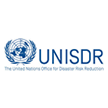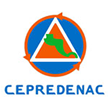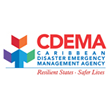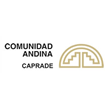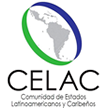- La UE y LAC, juntas en desastres naturales y humanitarios
- México, el país más vulnerable a desastres naturales de América Latina
- América Latina y el Caribe firman con la UE Un MdE sobre Cooperación en materia de Gestión Integral del Riesgo de Desastres
- El mundo está en la autopista hacia el infierno climático
- Informe de la Unesco advierte sobre el calentamiento global acelerado y el aumento del nivel del mar
The Meeting welcomed participants from twelve Member Countries, one Associate Member Country and five Observer Countries.
Sknvibes.com, St. Kitts
Port of Spain, October 12, 2015- The Association of Caribbean States (ACS) through its Directorate of Disaster Risk Reduction convened the 23rd Meeting of the Special Committee on Disaster Risk Reduction at the ACS Secretariat in Port of Spain on 9th October, 2015.
Delivering opening remarks, H.E. Alfonso Múnera, Secretary General of the ACS underscored the need for urgent action in the Greater Caribbean with regard to disaster risk reduction as this has always been a pressing issue for ACS Member Countries.
In his welcome remarks, Dr Carlos M Valdes Gonzalez, Director General, the National Centre for Disaster Prevention (CENAPRED) representing Mexico in its capacity as Chair of the Special Committee for Disaster Risk Reduction acknowledged the views of the Secretary General and expressed that there is a need to combine efforts within the Caribbean region in order to reduce the effects of natural disasters.
Mr George Nicholson, Director of Transport and Disaster Risk Reduction at the ACS, delivered the Directorates Report giving the Committee an update on activities completed over the past year, ongoing projects, new initiatives and collaborative efforts in which the Directorate is currently engaged.
Reporting on the Strengthening Hydrometeorological Operations and Services in the Caribbean Small Island Developing States Phase II (SHOCS II) project, Director Nicholson stated that work is expected to be completed in December 2015 and the implementation of Phase III is carded to begin in 2016. SHOCS II is aimed at enhancing the role and strengthening the capacity of National Meteorological and Hydrological Institutions and Disaster Management Agencies in ACS Member States in the provision of early warning services and preparedness to mitigate the impacts of natural hazards.
Director Nicolson also presented the Directorate Work Programme 2016-2017 highlighting six key activities: SHOCS III, the International Diploma in Disaster Risk Reduction Management, Strengthening Spatial Data Infrastructure in the Caribbean, the Caribbean Platform of Territorial Information for Disaster Prevention (PITCA) project, Green Response to Disasters and a new initiative; Storm Surge and Flood Risk Modelling.
Additional presentations included a report on the United Nations Initiative on Global Geospatial Information Management (UN-GGIM) which seeks to promote the development of Spatial Data Infrastructure in eleven countries in the Caribbean, to strengthen the generation, use and sharing of geospatial information.
The Meeting welcomed participants from twelve Member Countries, one Associate Member Country and five Observer Countries. International organisations and institutions such as the University of the West Indies (UWI), the Organisation of American States (OAS), the Finnish Meteorological Institute (FMI), Mexico’s National Institute for Statistics and Geography (INEGI), the National Centre for Disaster Prevention of Mexico (CENAPRED), the Economic Commission for Latin America and the Caribbean (ECLAC), the United Nations Office for Disaster Risk Reduction (UNISDR) and the Argentine White Helmets Commission were also in attendance.
- El Niño 2023-2024 América Latina y el Caribe
- Compendium of good practice on post disaster recovery in the Latin America and Caribbean Region: 12 Good practices
- Avances y desafíos de la cooperación internacional en desastres
- Informe de relatoría - Taller para la construcción de lineamientos estratégicos para la gestión del riesgo de desastre en América Latina y el Caribe
- Informe resumido, 17–19 de mayo de 2023: Reunión de alto nivel sobre la revisión intermedia del Marco de Sendai




